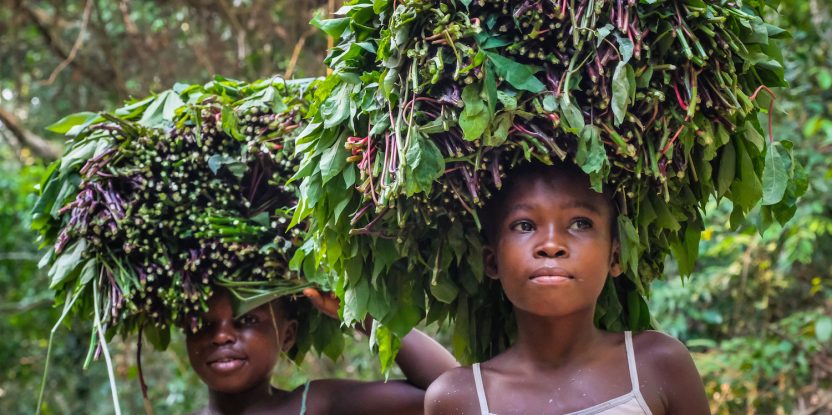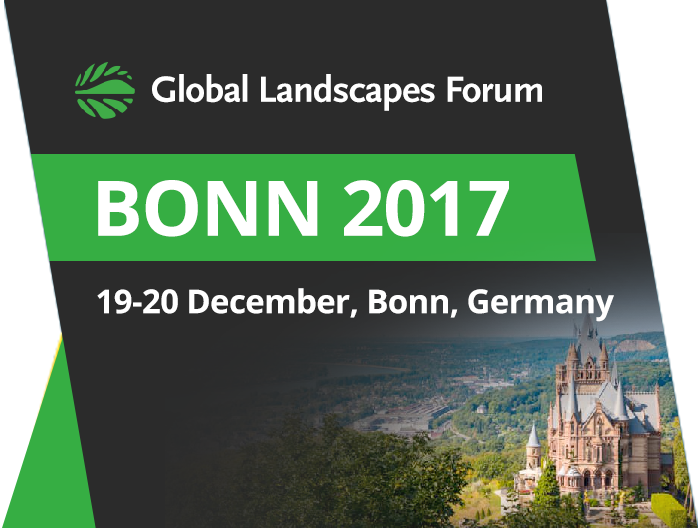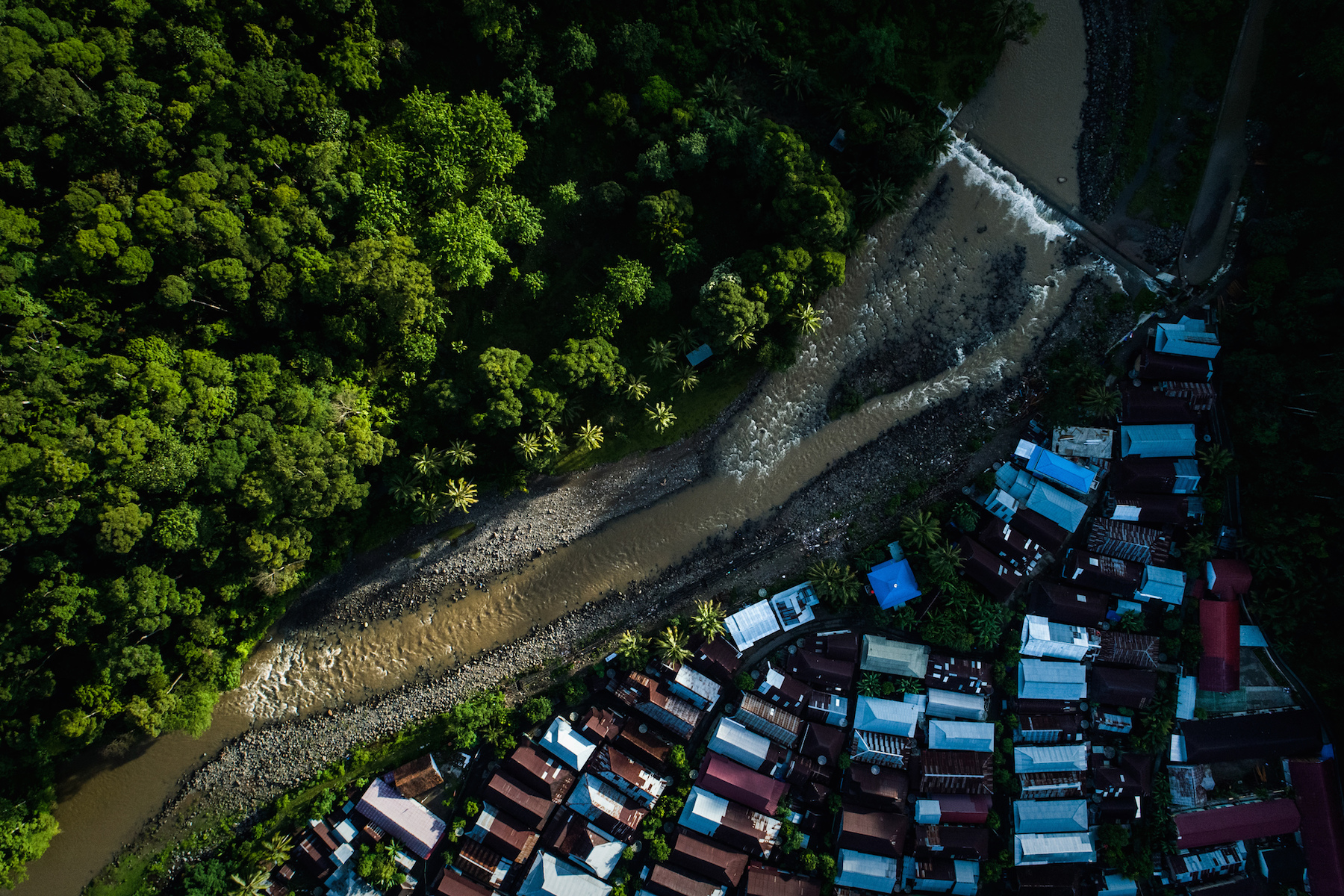
Looming potential infrastructure projects pose a serious threat to the forested peatlands of the Congo Basin, and could prevent the achievement of global goals on mitigating climate change, according to an environmental expert.
Spanning 3.7 million square kilometers and 10 countries, including Democratic Republic of Congo and Republic of Congo, the Congo Basin contains the largest undisturbed tract of tropical rainforests and peatlands in the world. The region is home to rich biological diversity, including the world’s most endangered great ape, the bonobo (Pan pansicus), and provides food, shelter and livelihoods for 40 million people.
Under protection by an international agreement with the World Bank since 2002, the Basin is now the subject of renewed environmental concern, as Greenpeace and the UN Environment program (UNEP) raise the alarm over the proposed construction of a massive dam and a major highway to aid mining, gas and oil explorations.
“The peatland is holding about 30 gigatons of carbon – equivalent to 15 to 20 years of US emissions,” says Dianna Kopansky, a UN-REDD (Reducing Emissions from Deforestation and Forest Degradation) program officer at UNEP, who will speak at the Global Landscapes Forum (GLF) on 19 December in Bonn, Germany. “At the moment it’s all locked in, it’s not emitting – it’s a natural flux of emissions and sequestration.”
Destruction of Congo peatland forests could halt progress on meeting the anti-warming target agreed on by almost 200 countries at UN climate talks in 2015 to restrict global temperature increases to well below 2 degrees Celsius, and to pursue efforts to limit increases to 1.5 degrees Celsius.
“Once the peatland starts to be drained or degraded, it will start to emit – that is the imminent future – and the emissions from that will be off the map, as far as the 2 degrees Celsius target [is concerned],” Kopansky says.
This topic will be discussed as part of a session titled Smoke on water – Countering global threats from peatland loss and degradation on 19 December at the Global Landscapes Forum in Bonn, Germany.
LOCAL FORESTS, GLOBAL IMPACT
More than a thousand delegates, including environmentalists, activists, policymakers, indigenous peoples, scientists, and past and present country leaders, will attend the GLF in Bonn to take action on forests, discussing all aspects of the ecosystems’ role in supporting local livelihoods and their significant contribution to mitigating global climate change.
Working across country borders at the regional policy level to encourage governments to protect the area, which is governed by the International Convention on Wetlands, is one form of action recommended by UNEP, the Center for International Forestry Research (CIFOR) and two-dozen partner organizations who form part of the Global Peatlands Initiative.
Luxury eco-tourism is being floated as one potential alternative to boost the economic health of the region while preserving the environment.
Environmentalists are more readily accepting a regional, collaborative approach as the best means to address climate-related forest ecosystem concerns, a strategic approach that will be discussed broadly at the Forum.
With science and traditional knowledge at its core, the GLF aims to put communities first in finding sustainable solutions at a landscape scale around the world. Speakers at the opening plenary on 19 December will address landscape-scale issues from global development goals to the power of the individual and communities to bring about change.
President Ameenah Gurib-Fakim of the island nation of Mauritius, an expert in biodiversity and sustainable development, will speak on the role of women as custodians of traditional knowledge.
“Safeguarding this information could help create a third way between science and tradition and help towards better adaptation to climate change, for example,” says Gurib-Fakim, a founding member of the Pan African Association of African Medicinal Plants, and co-author of the first African herbal pharmacopeia.
Erik Solheim, Executive Director of UNEP, will deliver his remarks alongside spiritual leader Sadhguru, founder of India’s Rally for Rivers campaign, which seeks to repair environmental damage by inspiring social behavioral change. Since the campaign to reforest India’s riverbanks through tree planting started in September, it has attracted more than 160 million followers.
A ROLE FOR SCIENCE
Scientists from CIFOR, among other research organizations, at the GLF will share their latest findings on peatlands and other globally significant landscapes. More than 80 organizations will take part in discussions at the two-day Forum, ranging in focus from the roles of forests in regulating climate, providing food and storing carbon, to issues of indigenous rights and gender equity in sustainable landscape management.
“CIFOR will be leading the GLF, but not necessarily imposing the contents,” says Robert Nasi, CIFOR’s Director General. “The Global Landscapes Forum is a platform and a scaling mechanism that can hopefully also accelerate more sustainable action, more optimal practices at the landscape level, because we bring everyone to the table.”
Stephen Leonard, a senior climate policy analyst with CIFOR, will join a session hosted by the Indigenous Peoples Major Group for Sustainable Development and partners on ensuring a rights-based approach to environmental preservation.
“When it comes to the idea of reducing emissions from deforestation and forest degradation and conservation of forests, which is described as REDD+, indigenous peoples play an important role,” Leonard says.
“A rights-based approach to REDD+ will be important going forward, not only for REDD+ efforts in and of themselves, but will also go a long way toward improving the livelihoods of indigenous communities and supporting the sustainability of the overall objective to reduce emissions from forests,” he says.
We want you to share Forests News content, which is licensed under Creative Commons Attribution-NonCommercial-ShareAlike 4.0 International (CC BY-NC-SA 4.0). This means you are free to redistribute our material for non-commercial purposes. All we ask is that you give Forests News appropriate credit and link to the original Forests News content, indicate if changes were made, and distribute your contributions under the same Creative Commons license. You must notify Forests News if you repost, reprint or reuse our materials by contacting forestsnews@cifor-icraf.org.

